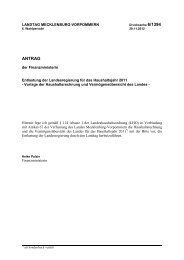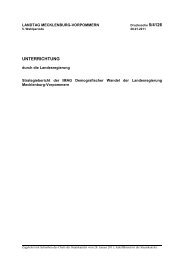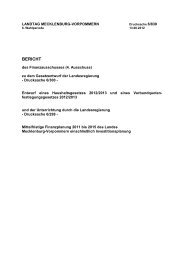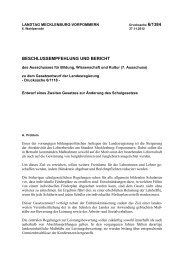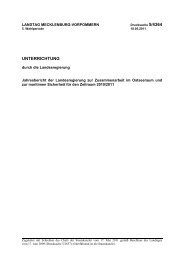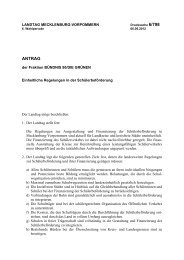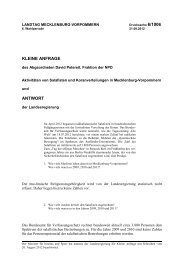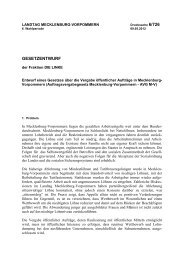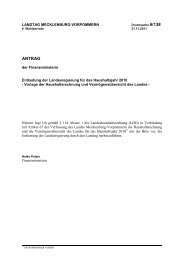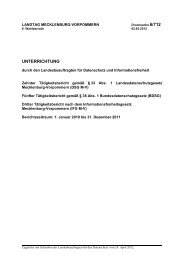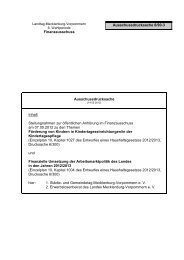Baltic Rim Economies - Baltic Port List
Baltic Rim Economies - Baltic Port List
Baltic Rim Economies - Baltic Port List
Create successful ePaper yourself
Turn your PDF publications into a flip-book with our unique Google optimized e-Paper software.
Expert article 916 <strong>Baltic</strong> <strong>Rim</strong> <strong>Economies</strong>, 21.12.2011 Quarterly Review 5�2011<br />
Future of North-South connections – about transportation, but not only<br />
transportation<br />
By Erik Terk and Jüri Sakkeus<br />
The countries on the Eastern shore of the <strong>Baltic</strong> Sea have<br />
made during the past twenty-odd years rapid progress in<br />
their integration into the world economy, especially the<br />
economy of the European Union. Yet this integration has<br />
not been equally rapid in all prospective directions. For<br />
example, the economies of Estonia and Latvia have very<br />
closely integrated into the Nordic economies, while their<br />
relations with Germany and Poland, which were several<br />
times stronger that whose with the Nordic countries during<br />
the pre-war period, have developed quite slowly. It can be<br />
generally argued that the ties of the so-called border states<br />
of the EU “Eastern rim” with central Europe have suffered<br />
due to the inadequate land transport connections. For the<br />
same reason the mutual integration of the region’s<br />
countries has been hindered to some extent. Relations<br />
between Estonia and Finland serve as the sole exception<br />
here as the absence of land link has been compensated by<br />
the rapidly developing maritime traffic. The North-South<br />
transport link is topical not merely from the aspect of better<br />
connections between the <strong>Baltic</strong> and central European<br />
states; it is also an important premise for intensifying the<br />
economic relations between the three <strong>Baltic</strong> states and<br />
Finland and an extensive geographical area from Ravenna<br />
in Italy to Odessa in Ukraine and further on to the large and<br />
growing market of Turkey. This direction has started to<br />
attract considerable interest among the economic circles of<br />
the aforementioned countries.<br />
The situation in the region can significantly change with<br />
the construction of a direct European-gauge rail link from<br />
Tallinn to Warsaw. This project, the Rail <strong>Baltic</strong>, has recently<br />
undergone a feasibility study and has found support among<br />
the leading politicians of the region as well as the European<br />
Commission. It seems that even Latvia is overcoming its<br />
initial pessimism regarding the project. Finland’s premier<br />
Jyrki Katainen recently expressed his unequivocal support<br />
to the project by welcoming the decision of the <strong>Baltic</strong><br />
states’ premiers to create a joint enterprise for the<br />
realisation of the Rail <strong>Baltic</strong> project. Katainen emphasised<br />
that the project is highly important for the improvement of<br />
the competitiveness of Finland’s economy.<br />
The new railway would be electric and have two tracks.<br />
It would carry both passengers and cargo, allowing<br />
passenger trains to travel from Tallinn to Warsaw within<br />
roughly six hours and freight trains to reach the Polish<br />
border from Tallinn in ten hours.<br />
The 728-kilometre route of Rail <strong>Baltic</strong> would preferably<br />
run to the Polish border along the trajectory Tallinn-Pärnu-<br />
Riga-Panevezys-Kaunas.<br />
The realisation of the project will take clearly more than<br />
ten years, while the assessment of its impact requires<br />
operating with an idea of economic and social conditions in<br />
twenty or more years and the latter could significantly differ<br />
from those currently considered as normal. The<br />
extrapolation into the future of the existing trends and<br />
relations could therefore be quite risky. The demand for<br />
transport, including different modes of transport could be<br />
driven in the future by new factors different from the current<br />
ones, while the completed new transport corridors could<br />
create additional economic and social effects, which were<br />
initially viewed as insignificant. Improved transport<br />
80<br />
connections or e.g. handling new flows of transit will<br />
change the relations and structure of economy and will<br />
contribute to economic growth; the changing economy, incl.<br />
the emergence of new businesses and improving<br />
standards of living in turn will initiate additional or different<br />
demand for transport. We shall attempt in the following text<br />
to present some viewpoints and considerations about<br />
which factors and changes should be taken into account.<br />
These positions were formed predominantly during the<br />
realisation of two projects: the cooperation of Estonian,<br />
Latvian and Lithuanian experts while building the <strong>Baltic</strong><br />
states’ integration scenarios (<strong>Baltic</strong> Way(s) of Human<br />
Development: Twenty Years On) and the H-T Transplan<br />
project, financed by the European Commission and<br />
addressing the planning and transport connections of the<br />
Helsinki and Tallinn metropolitan areas. During the<br />
realisation of these projects a series of partly interrelated<br />
problems with greater geo-economic significance cropped<br />
up, which provide a broader view of the issues concerning<br />
the Rail <strong>Baltic</strong> construction and the general development of<br />
a transport corridor linking the countries to the East of the<br />
<strong>Baltic</strong> Sea. The most important of these issues were:<br />
� the volume, type and impact on Rail <strong>Baltic</strong> of the<br />
Finland-related flow of cargo;<br />
� the share of long-range (further than the next country)<br />
travels in Rail <strong>Baltic</strong> passenger traffic portfolio;<br />
� the change of cargo flow structure in the traffic within<br />
the <strong>Baltic</strong> Sea region, incl. the changes caused by the<br />
convergence of the former post-socialist economies<br />
with the so-called old EU countries;<br />
� further development of the three <strong>Baltic</strong> states’<br />
economies, its forms and impact on demand for<br />
transport;<br />
� the impact of the development of integration of Helsinki<br />
and Tallinn metropolitan regions, the emergence of a<br />
twin city, on future demand for transport;<br />
� the impact of potential processes in the functioning of<br />
the EU on the likelihood of supporting major transportrelated<br />
infrastructure projects;<br />
� the potential of mutual strengthening of North-South<br />
and East-West (predominantly related to Russia)<br />
transport flows;<br />
� the change of ratio between various modes of transport,<br />
incl. due to ecological demands and restrictions;<br />
� the effect of geo-economic changes (especially the<br />
ascent of East Asia) on the increasing of Europe-related<br />
flows of cargo;<br />
� the emergence of new international transit corridors,<br />
which could be related to the region under observation;<br />
� likely changes of the dynamics and pattern of the<br />
people’s mobility; their effect on the demand for<br />
passenger transport.<br />
It is not possible to provide definite answers to a large<br />
share of the above questions, but it is possible to attempt to<br />
foresee the most likely trends of developments and their<br />
interrelation. The H-T Transplan project included the<br />
building of four possible scenarios for the analysing of the<br />
� Pan-European Institute � To receive a free copy please register at www.tse.fi/pei �



